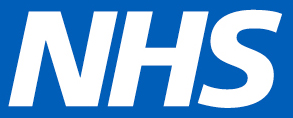Learn about how the Region moved from biologic medications to biosimilars and the stakeholder engagement needed in making this change.
This summary shares what worked for Buckinghamshire, Oxfordshire and Berkshire West (BOB) Integrated Care Board (ICB) in overcoming the challenges of differing perspectives on the risks, benefits and available resources in making medication changes to deliver significant cost savings.
What was the opportunity?
The advent of biosimilar medications presented an opportunity to switch patients from biologicals to biosimilars. This change allows for a different medication administration method and is a more cost-effective treatment. The concept of biosimilars is generally accepted amongst clinicians, however as a medication it is not identical in efficacy and dosage to the existing biological medicines, resulting in differing clinical perspectives on the risks and benefits of the change.
What were the potential benefits of the switch?
Switching to biosimilars, which are available at a lower cost without compromising patient care, means that more of the appropriate medicines can be available to more patients. At the same time, the money saved can be redirected within the same area, leading to increased improvements in patient care.
What were the challenges of the switch?
Key challenges which needed to be overcome included:
- Reluctance by clinicians and pharmacists to make the change due to concerns about their capacity and about the efficacy or risk of the biosimilars compared to the b They also had concerns regarding the change in administration method of the biosimilars.
- Unofficial patient groups on social media were sharing anecdotal evidence of negative side effects of the new medications, creating resistance to enacting the change.
- Debate over where the cost saving would be realised, i.e., which department would benefit from the financial incentive of the change. If teams were spending resource on implementing the change they wanted to feel the benefit in some way.
How were these challenges overcome?
We convened internal stakeholder forums across systems to ensure that affected stakeholders contributed to the design of the solution. This led to people taking on champion roles within their Trusts which really helped with managing the concerns of both patients and staff. By identifying cost savings early, and gaining Chief Executive buy-in at the beginning of the project, we were able to make the financial case for additional resources. These resources included temporarily assigning project managers so that pharmacists were not responsible for all elements of the change.
What was the impact of making the change?
From October 2021 to August 2023 there were significant cost savings (£178,414.80) and just under 100% patient adoption of the change.
What top tips would you provide to someone else leading an at-scale change?
Build a culture of collaboration and coalescing around a common purpose. The ability to connect parts of the system to itself really helped with buy-in and led to the coproduction of the plan to deliver the change. The formation of the ICB was useful timing for the work as it increased the levels of consultation between the Trusts in each area. The process of working through the different perspectives on the change as a collective allowed a new consensus to form and for new solutions to emerge in overcoming the challenges faced.
Foster innovation mindsets. This allowed for Trusts to experiment and learn from different ways to approach the challenge. The sharing of lessons learned created efficiencies as the project progressed. The innovation included reorganising pharmacy functions and ways of working as well as having allocated pharmacists for different specialisms.
Create contagion through stakeholder communication and engagement. We worked with a range of groups including pharmacists, clinicians, administrators and of course patients. Creating energy and enthusiasm for the change through networks of Clinical Champions, who were able to answer questions and be a point of contact to all stakeholders, helped to build trust in the change and drove internal adoption within the Trusts.
Ensure leadership buy-in at all levels. Having Chief Executive buy-in was key, and doing this as early as possible enabled the identification of funding sources to overcome the capacity challenges in delivering the change. Alongside working with the stakeholder groups, it also built trust and integrity in the project messages.
Patient & clinician education is invaluable. Those who invested more time in this saw a quicker adoption of the change. It was important that staff were able to respond to patient concerns and questions.
Proper planning is vital. This includes having plans for the actual switch process and governance around any decisions required. It also included planning of the benefits evaluation through seeking, and learning from, patient data and clinician and patient feedback.
Want to know more about the technical details of this change?
Then please



